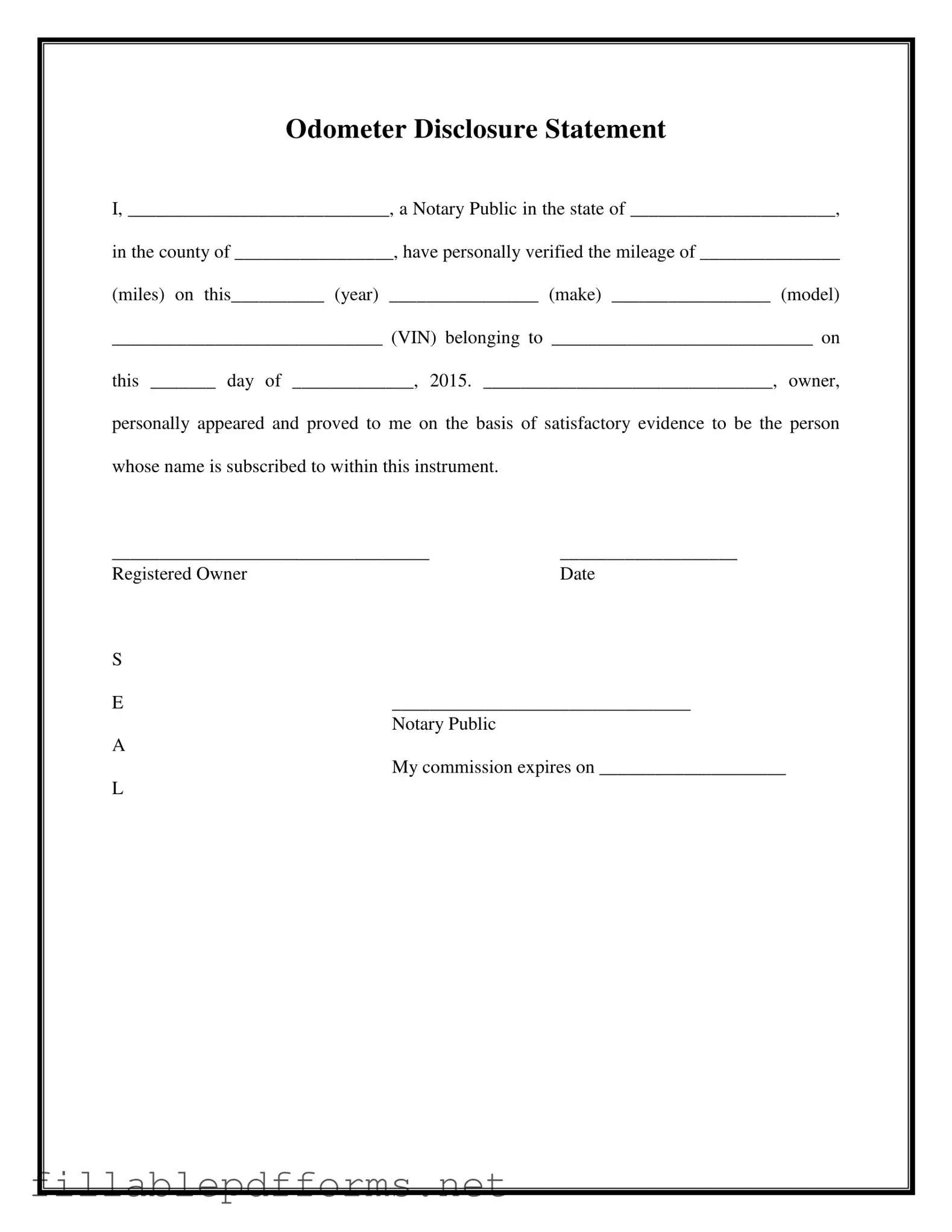When it comes to buying or selling a vehicle, ensuring accurate mileage disclosure is crucial for both parties involved. The Notarized Odometer Statement form serves as an essential document in this process, providing a legally recognized record of a vehicle's mileage at the time of transfer. This form includes key details such as the vehicle's make, model, and Vehicle Identification Number (VIN), along with the verified mileage. It also requires the signature of a notary public, who confirms the identity of the registered owner and attests to the accuracy of the information provided. By utilizing this form, buyers can protect themselves from potential fraud, while sellers can demonstrate transparency in their transaction. Completing this statement is not just a formality; it is a critical step in ensuring a smooth and lawful transfer of ownership. The importance of this document cannot be overstated, as it safeguards the interests of both the buyer and seller in the vehicle sale process.
